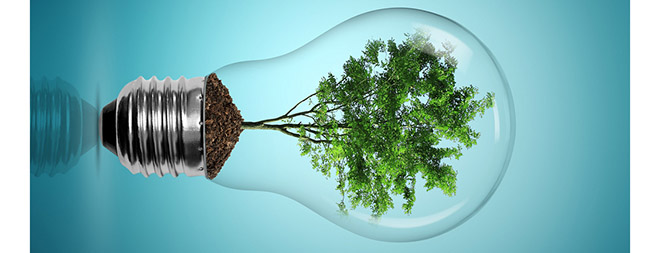
Clean Energy, Batteries Not Included (Op-Ed)

Sonia Aggarwal is director of strategy at Energy Innovation: Policy and Technology. She contributed this article to Live Science's Expert Voices: Op-Ed & Insights.
People often argue that, without cheaper batteries, more renewable energy can’t be added to the electric grid. But the truth is, there are several options —beyond batteries — for managing the variable electric loads introduced by renewables like solar and wind power.
First, when a diverse array of energy resources is balanced over a wide geographical area, variability in the electric grid declines considerably. For example, the times when the wind blows in California's central valley differ from when it's windy on Oregon’s coast. Used strategically, electricity transmission can balance resources across such areas. And where balancing won't work, energy imbalance markets can also deliver substantial flexibility.
Second, an emerging, powerful approach is to better manage our electricity demand. Switches and radios can turn all the buildings in our nation into thermal batteries: By simply pre-cooling or pre-heating buildings and water supplies, thermostats and hot water heaters become amazing sources of grid flexibility, all while delivering the same comfort and service to homeowners. Major companies like Honeywell, Johnson Controls, and Google's Nest Labs are recognizing this opportunity and taking action. But regulators and market operators can drive this market by simply setting proper values for these grid services.
Third, given the rapid technological progress we are seeing in the electric energy sector, smarter optimization of energy generation and distribution can have a considerable impact. In prior decades, grid operators saw demand as an uncontrollable variable, and dispatched supply to meet it. Now, supply is more variable and demand is more controllable. Luckily, operational changes and smarter software can go a long way to optimize across supply and demand. Activities like dispatching power on shorter intervals, defining power market products clearly so that supply- and demand-side providers can bid to deliver energy services, and automating grid operations can all help deliver an optimized system.
Fourth, new combined-cycle fast-ramping natural gas plants can also deliver flexibility. America's production of natural gas has been increasing in recent years, as have our estimated reserves, and many have described it as the bridge to a clean energy future. But to effectively use gas as a bridge, integrated power systems can take advantage of gas's ability to ramp production up and down quickly. This is a benefit that gas has over coal, nuclear and renewables. New, highly efficient turbines can deliver flexibility as a smart way to use gas as part of a portfolio.

Fifth, storage in the traditional sense — grid-scale batteries, pumped hydro facilities, and others — have a role to play. Pumping water uphill during periods of low demand and using it to generate electricity during periods of high demand has long been used to store energy in regions with the right terrain, though careful consideration must be given to the local environmental impacts that may result from this kind of pumping and releasing of water in fragile habitats. Also, according to the U.S. Department of Energy, the cost of battery storage has come down nearly 80 percent in the last five years, and policies like California's energy-storage target (1.3 gigawatts by 2020) are clearing the path for this important technology to march further down the cost curve. [Affordable Batteries for Green Energy are Closer than We Think ]
Sign up for the Live Science daily newsletter now
Get the world’s most fascinating discoveries delivered straight to your inbox.
Finally, energy providers can manage the variability introduced by renewables by encouraging flexible power demand (chemical production, for example), where industries take advantage of excess power during times of high renewable energy production. As an alternative, renewable power can be curtailed in regions where cheaper solutions are not viable.
Researchers at the U.S. National Renewable Energy Laboratory popularized the concept of a flexibility supply curve to bring some order to the way energy providers think about the resources that are available to manage variability. The basic idea is that power grid operators should consider options based on least-cost, rather than on the first ideas that might come to mind — such as natural gas plants or grid-scale battery storage — which may end up being more expensive than some of the other options.
These alternatives to battery storage are available today, and smart companies are deploying these resources all across America. So, there is no need to wait for battery costs to come down before deploying more clean, renewable energy.
Follow all of the Expert Voices issues and debates — and become part of the discussion — on Facebook, Twitter and Google +. The views expressed are those of the author and do not necessarily reflect the views of the publisher. This version of the article was originally published on Live Science.









